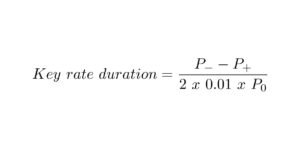What Is a Knock-Out Option?
A knock-out option has a built-in mechanism to expire worthless if a specified price level in the underlying asset is reached. A knock-out option sets a cap on the level an option can reach in the holder’s favor.
As knock-out options limit the profit potential for the option buyer, they can be purchased for a smaller premium than an equivalent option without a knock-out stipulation.
Understanding a Knock-Out Option
A knock-out option is a type of barrier option. Barrier options are typically classified as either knock-out or knock-in. A knock-out option ceases if the underlying asset reaches a predetermined barrier during its life. A knock-in option is effectively the opposite of a knock-out. The option is activated only if the underlying asset reaches a predetermined barrier price. Large institutions primarily use knock-out options in the commodity and currency markets, considered exotic options. They may also be traded in the over-the-counter (OTC) market.
Types of Knock-Out Options
Knock-out options come in two basic types:
Down-and-Out Option
A down-and-out option is one variety. It gives the holder the right, but not the obligation, to purchase or sell an underlying asset at a predetermined strike price—if the underlying asset’s price does not go below a specified barrier during the option’s life. Should the underlying asset’s price fall below the barrier at any point in the option’s life, the option expires worthless.
For example, assume an investor purchases a down-and-out call option on a stock trading at $60 with a strike price of $55 and a barrier of $50. If the stock trades below $50 before the call option expires, the down-and-out call option promptly ceases to exist.
Up-and-Out Option
Contrary to a down-and-out barrier option, an up-and-out option gives the holder the right to buy or sell an underlying asset at a specified strike price if the asset has not exceeded a specified barrier during the option’s life. An up-and-out option is only knocked out if the underlying asset’s price moves above the barrier. Assume an investor purchases an up-and-out put option on a stock trading at $40, with a strike price of $30 and a barrier of $45. Over the option’s life, the stock hits a high of $46 but then drops to $20 per share. Too bad: the option would still automatically expire because the barrier of $45 had been breached. Now, if the stock hadn’t gone above $45 and eventually sold off to $20, the option would remain in place and have value to the holder.
Advantages and Disadvantages of Knock-Out Options
A knock-out option may be used for several different reasons. As mentioned, the premiums on these options are typically cheaper than their non-knockout counterparts. A trader may also feel that the odds of the underlying asset hitting the barrier price are remote and conclude that the cheaper option is worth the risk of being knocked out of the trade.
Finally, these types of options may also benefit institutions that are only interested in hedging up or down to concrete prices or have very narrow tolerances for risk.
Pros
- Have lower premiums
- Limit losses
- Suitable for specific hedge/risk-management strategies
Cons
- Vulnerable in volatile markets
- Limit profits
- Exotic options are often less accessible to investors
Knock-out options limit losses. However, as is often the case, buffers on the downside also limit profits on the upside. Moreover, the knock-out feature is triggered even if the designated level is briefly breached. That can prove dangerous in volatile markets.
Knock-Out Option Example
Let’s say an investor is interested in Levi Strauss & Co., which went public on March 21, 2019, at $17 a share. By May 2, it had closed at $22.92 per share.
Say our investor is bullish on the historic jeans maker but still cautious.
The investor may write a call option at $23 per share with a strike price of $33 and a knock-out level of $43. This option only allows the option holder (buyer) to profit as the underlying stock moves up to $43, at this point, the option expires worthless, thus limiting the loss potential for the option writer (seller).
Conclusion
- Barrier options, like knock-out options, lose all of their value if the price of the underlying product goes above or below a certain price.
- The two kinds of knock-out choices are down-and-out choices and up-and-out choices.
- Knock-out options put limits on both losses and gains.












































